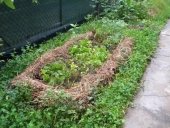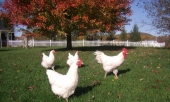







How permies.com works
What is a Mother Tree ?




"You may never know what results come of your action, but if you do nothing there will be no result”
How Permies.com Works
Be Nice












Pamela Melcher
Happiness, Health, Peace and Abundance for All.




-- Multi-Mode




Brenda
Bloom where you are planted.
http://restfultrailsfoodforestgarden.blogspot.com/




Pamela Melcher
Happiness, Health, Peace and Abundance for All.









Pamela Melcher
Happiness, Health, Peace and Abundance for All.




Our projects:
in Portugal, sheltered terraces facing eastwards, high water table, uphill original forest of pines, oaks and chestnuts. 2000m2
in Iceland: converted flat lawn, compacted poor soil, cold, windy, humid climate, cold, short summer. 50m2












Brenda
Bloom where you are planted.
http://restfultrailsfoodforestgarden.blogspot.com/

|
This tiny ad has a self esteem problem. Too much self esteem.
Learn Permaculture through a little hard work
https://wheaton-labs.com/bootcamp
|




